Guge Kingdom (West Tibet) Painting Style - Added

A page for the Guge Kingdom Painting Style of West Tibet (Ngari) has been added. A link to this page can also be found on the Terminology & Classification of Painting Style Names Page.


A page for the Guge Kingdom Painting Style of West Tibet (Ngari) has been added. A link to this page can also be found on the Terminology & Classification of Painting Style Names Page.

Palpung Monastery has its own unique style of painting yet still maintains a tradition of painting the Karma Kagyu Sertreng Lineage in the original Karma Gadri style. A link to this page can also be found on the Terminology & Classification of Painting Style Names Page.
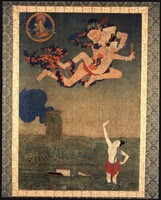
A Palpung Monastery Painting Style Page has been added. A link to this page can also be found on the Terminology & Classification of Painting Style Names Page.

The Ngor Tradition Main Page has been updated with additional links and images. A link to this page can also be found on the Terminology & Classification of Painting Style Names Page.
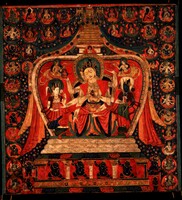
A Gyantse Style Paintings Page has been added to the Terminology & Classification of Painting Style Names Page. This style of Tibetan painting is attributed to the artist Chu'i Gangpa.

The Tsengo Dragpa Gyaltsen Page has been updated with additional links and images.

The Five 'Tsen' Protectors have been upgraded to the Six 'Tsen' Protectors with the addition of Tashi Obar - special protector of the Bodong Tradition.

The Dorje Setrab Main Page has been updated with additional content including a passage from the writings of the Great Fifth Dalai Lama concerning the origins of the deity.
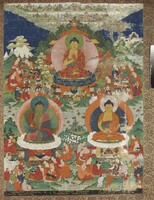
The Terminology & Classification of Style Names Page has been updated with additional links and content.

An early Indian Painting Style Page has been added to the Terminology & Classification of Styles Page.
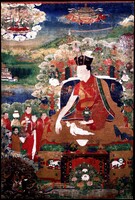
A Karma Gadri Painting Style Page has been added to the Terminology & Classification of Styles Page.

Additional images have been added to the Five Forms of Tsongkapa Page.
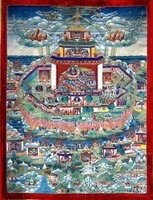
Paintings inspired by dreams. This is just a quick selection of images that are based on dream experiences. The earliest dream occurring in art is the image of the white elephant descending from the Tushita heaven into the sleeping chamber of Mayadevi the mother of the Buddha.

A new page for Terminology & Classification of Style Names has been added and linked to the Painting & Composition Types Main Page. The Terminology Page is a work in progress. More links will be added and new pages created for the different regions, artists and styles.
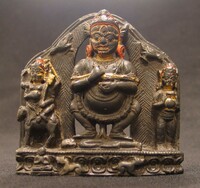
A Protector Deities Number Sets Page has been added to the Number Sets Main Page.
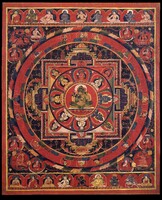
A Green Tara 17 Deity Mandala Page has been added.

The Repeated Figures Composition Page has been updated with additional links and content.
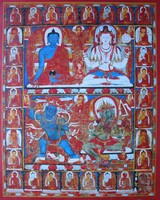
Of the three types of composition in Himalayan style art, [1] Register, Grouped Figures and Archaic Architecture, [2] Floating Figure and [3] Repeated Figure Composition, the first of these with register and grouped figures was the earliest to appear and lasted from approximately the 11th century until the 17th century.
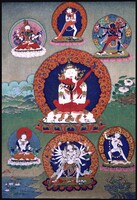
Of the three types of composition in Himalayan style art, [1] Register, Grouped Figures and Archaic Architecture, [2] Floating Figure and [3] Repeated Figure Composition, the Floating Figure type became the dominant composition style for scroll painting (tangka) after the 17th century.

The Painting and Composition Types Main Page has been updated with additional links and content.